GHOSTLY THURMOND'S SILENT LANDSCAPE - Once Roaring Engines, Bustling Crowds, Lots Of Money
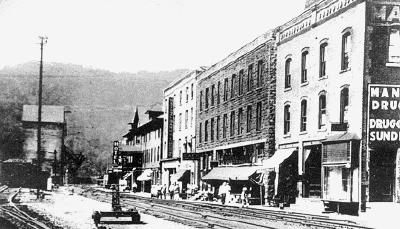
Thurmond was at the center of the C & O, coal and timber empire ...
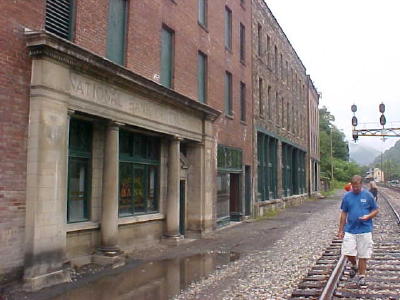
... now a silent and ghostly landscape off the beaten path
By Bob Weaver 2009
A C & O eastbound train rolled through Thurmond last Saturday on one of two tracks that wind through the scenic New River Gorge. The train whistle blew, echoing up and down the deep valley, a salute to the faded town.
It is still the "main line."
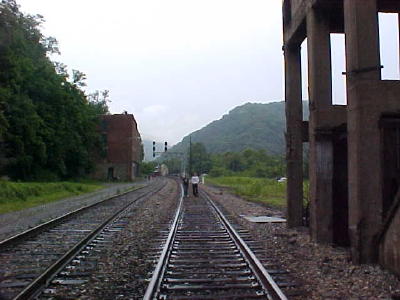
Shadows and images of a long gone era ...
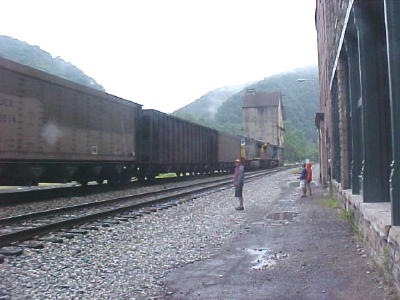
... still a busy main line route east and west
A storm came, winds, lightning and thunder, causing what few tourists were visiting to rush to their cars and drive away. Left was the silent landscape, darkened buildings and shadowy images.
Thurmond is a ghost town, resurrected briefly with the filming of John Sayle's 1987 award-winning film "Matewan."
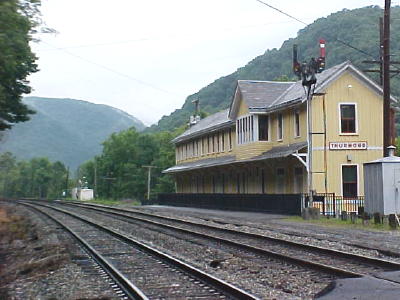
The old depot from 1904 has been restored by the National Park Service
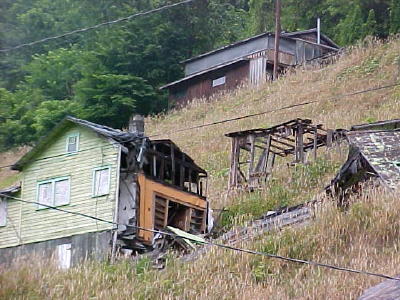
A few abandoned houses dot the hillside above the town
It once was a booming place - banks, stores, hotels and hoards of people - but during the Great Depression it began to decline, becoming a sleepy shadow of the industrial society which once occupied the Gorge.
We hunkered within the New River Banking and Trust, the town's second bank, to wait the passing storm and to imagine the guests coming and going from the Standard Dry Goods store to the Lafayette Hotel, with little space to walk beside the tracks.
The air would have been thick with smoke and cinders as the mammoth steam engines came through, the town noisy and crowded.
The National Park Service has purchased the main buildings, what is left of business row, with intentions of future restoration.
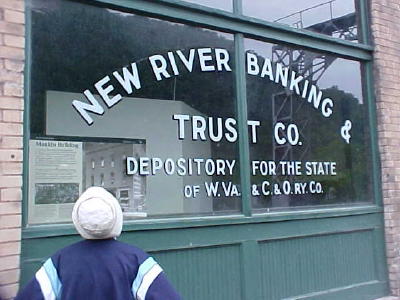
One of two bank buildings still standing, waiting restoration
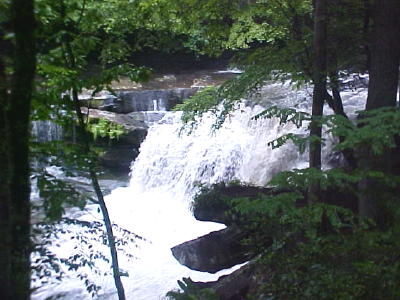
One of several waterfalls along the narrow road to Thurmond
The rolling thunder of steam engines first came through the gorge in 1873, the same year Captain W. D. Thurmond bought the land on which the once prosperous town was built.
By 1910 the C & O revenues from Thurmond produced more tonnage than any other operation, with 75,000 train passengers a year delighting in what the town had to offer. They could stay at one of two hotels, see a movie and enjoy dinner in one of several eateries, waiting for the next train through.
Besides the depression, America's love affair with the horseless carriage took its toll on Thurmond. When American railroads converted from steam to diesel in the 1940s, the huge railroad yard which was geared to steam engines became obsolete and workers lost their jobs.
The town has been plagued by fires, the Dunglen Hotel in 1930 and the Lafayette Hotel in 1963. The famous Engine House burned to the ground in 1993.
Recently restored is the 1904 depot, which now serves as a visitor center, occasionally opened for tourists.
A few falling down houses mark the otherwise beautiful landscape of the Gorge, one of the state's most beautiful attractions and popular with white-water rafters.